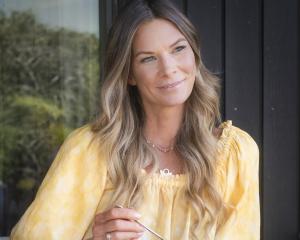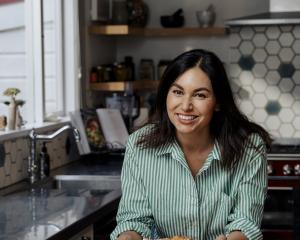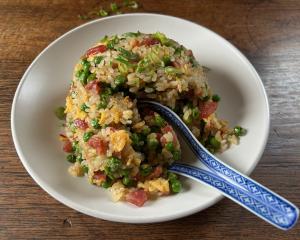Although few of us realise it, chocolate, like wine and tea, can taste different depending on where it comes from. Charmian Smith talks to Alison Holland and has her eyes and tastebuds opened to the world of chocolate.
Snap and taste a piece of Alison Holland's chocolate made from Dominican Republic beans and the aromas and flavours of mocha, honey and red fruit fill your senses.
Then try a piece of her Costa Rican chocolate and the flavours are more earthy, malty with undertones of caramel and raspberry. Then there is the floral stonefruit and spice of the Venezuelan chocolate, and the intense earthiness with hints of tangerine and lively brightness of the chocolate from Madagascan beans.
These are plain chocolate bars with nothing added to the roasted beans but sugar and cocoa butter - no soy lecithin, milk, vanilla or other flavourings usually found in chocolate bars, to confuse the flavours of the beans.
Even organic raw sugar left a suggestion of molasses on the aftertaste, so she now uses plain white sugar, so the flavour potential of the beans would not be compromised, she says.
Holland, of White Rabbit Cacao, in Bannockburn, Central Otago, is fascinated by making chocolate and bringing out the flavours of the beans from different origins and different seasons. She wants others to know about the differences of flavour possible.
Besides Whittakers in Wellington, she says, she is the only chocolate maker in the country who imports raw beans, roasts them and makes chocolate from them producing bean-to-bar, single-origin chocolate.
A long-time chocolate lover, when she gave up managing the Mt Difficulty vineyards to look after her small children, she thought she might like to become a chocolatier, making chocolates, truffles and other sweets from chocolate coverture. Her husband Matt Dicey, wine maker at Mt Difficulty, gave her a book on making chocolates for her birthday in 2009, but she never got past the first chapter on making chocolate itself, she says with a laugh.
She started small, importing some beans and using a coffee roaster to roast them and a lentil grinder to grind, mix and conch the chocolate. Her first experiments were devoured by the Mt Difficulty staff, and soon she and Dicey were selling their chocolate at the Central Otago farmers market in Cromwell.
They decided to call the business White Rabbit Cacao.
White Rabbit refers to the vineyard on which they live, named Black Rabbit because a black rabbit always seemed to be there when they planted it.
Last year they decided to expand their chocolate production to meet the growing demand, and converted their garage into an artisanal factory, installing larger machines. In good Kiwi fashion, some are adapted - a commercial oven with a drum added to the rotisserie to roast the beans - some home-built - a winnower that blows the husks from the nibs (roasted beans). Others are specialist artisan chocolate machines, such as the melangeur which heats, mixes, grinds and conches the nibs and sugar until they form a smooth liquor, and the temperer, which heats and cools the chocolate so it crystallises into a glossy chocolate with a good "snap".
Chocolate, like grapes and wine, contains many compounds, which allows for flavour complexity and for it to show characteristics of its origin and the season, something Holland likes to enhance when she is making it.
Part of the art of making the chocolate is getting the conching right, Holland says.
Conching takes three to five days. During the first 12-24 hours the nibs and sugar are ground to form a molten liquid but the chocolate is still far from resembling the finished product, she says.
"From there, the combination of heat and aeration through mixing drives off any undesirable flavour compounds and also continues to refine the particle size while coating the cocoa solids and sugar with the cocoa butter to give a better texture and mouthfeel - this is the conching process.
"Throughout the conching, the flavour changes can be quite dramatic with all the different flavour compounds enhanced during roasting coming to the fore at various stages and the end of the conching process will depend on the final flavour that I am looking for."
However, if you conch too long you lose the special characteristics and end up with a simple cocoa flavour.
There are several artisan chocolate-makers in the United States, and she buys her beans through one of the distributors supplying them. Eventually she would like to source her beans directly from farmers and would also like to find beans from Vanuatu and other Pacific countries, Holland says.
The beans are dried and fermented at their place of origin, and need to be sorted to remove stones and damaged beans before roasting, she says.
Central Otago is a good place to make chocolate, as it is so dry.
Humidity can upset the chocolate, she says - which is why manufacturers such as Cadbury's, originally sited their factories in cool places, such as Dunedin and Hobart, Tasmania.
White Rabbit chocolate bars are 70%-75% cacao, intensely flavoured so you do not need as much to savour as you would with a sweeter milk chocolate, Holland says.
White Rabbit Cacao bars are available in specialist outlets and from the website: www.whiterabbitcacao.co.nz
Taste test
To taste chocolate, first see if it's glossy, then break it to see if it snaps. Smell it to identify aromas, then bite it and hold the chocolate between your tongue and the roof of your mouth and let it melt, running your tongue along it.











